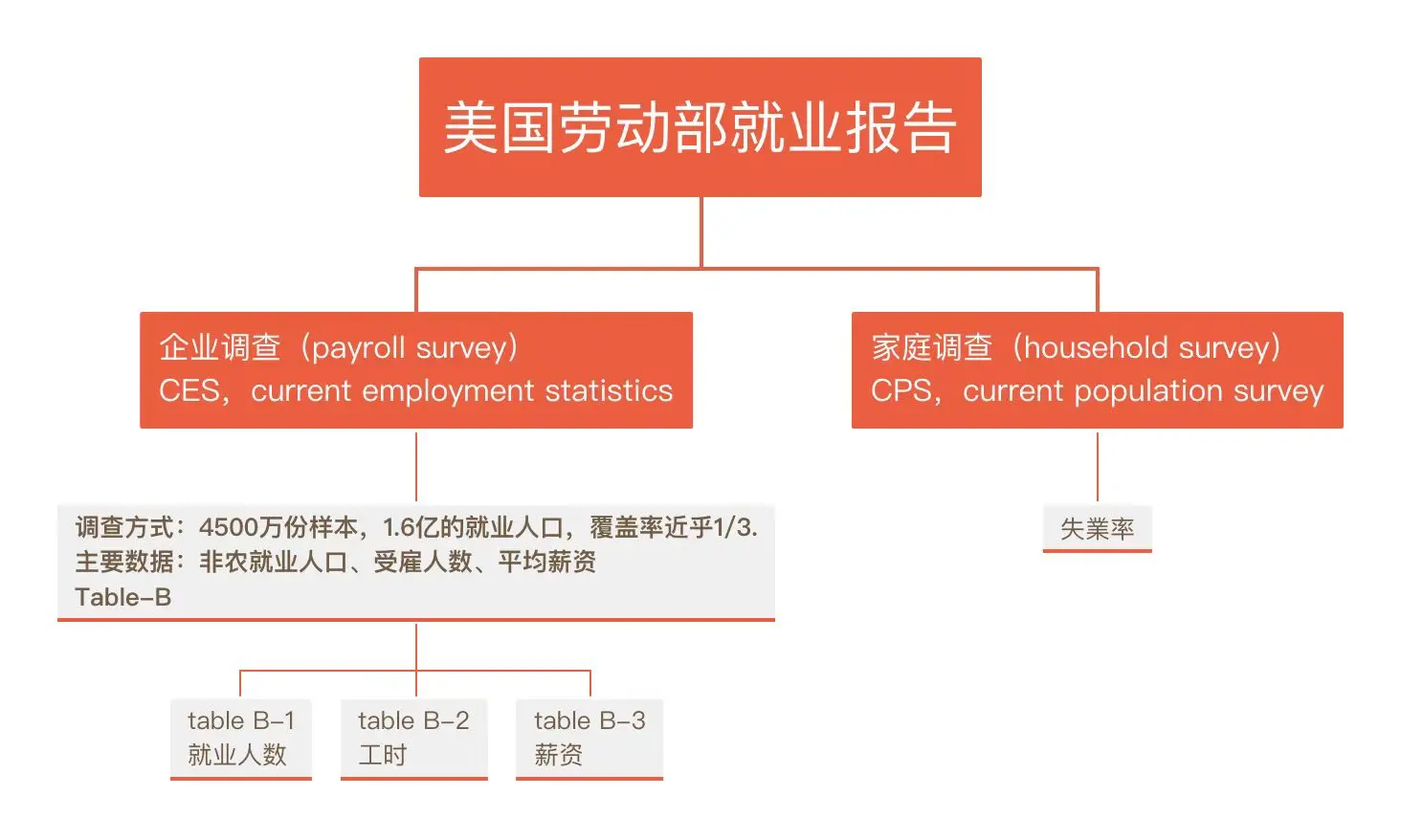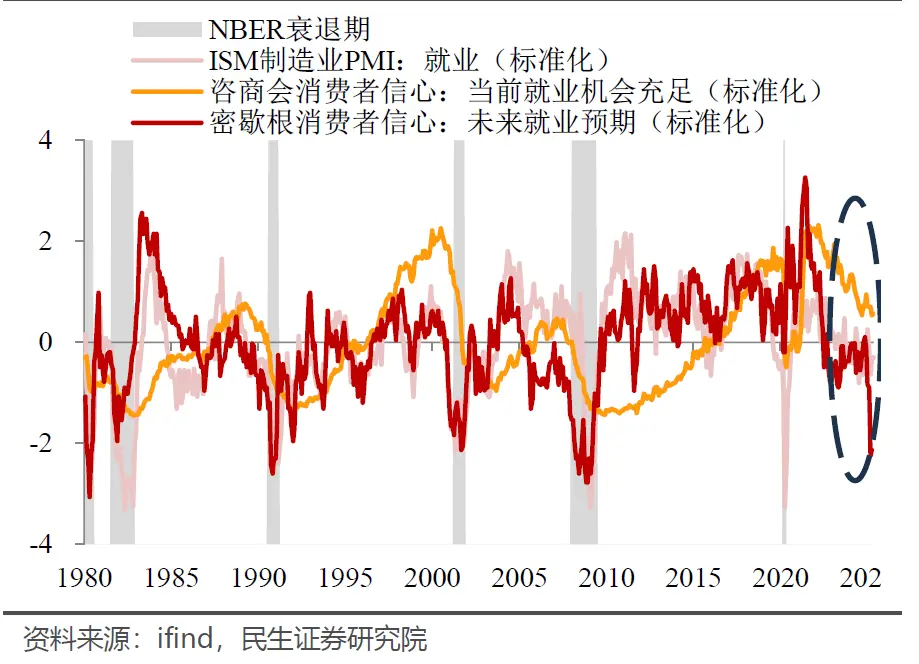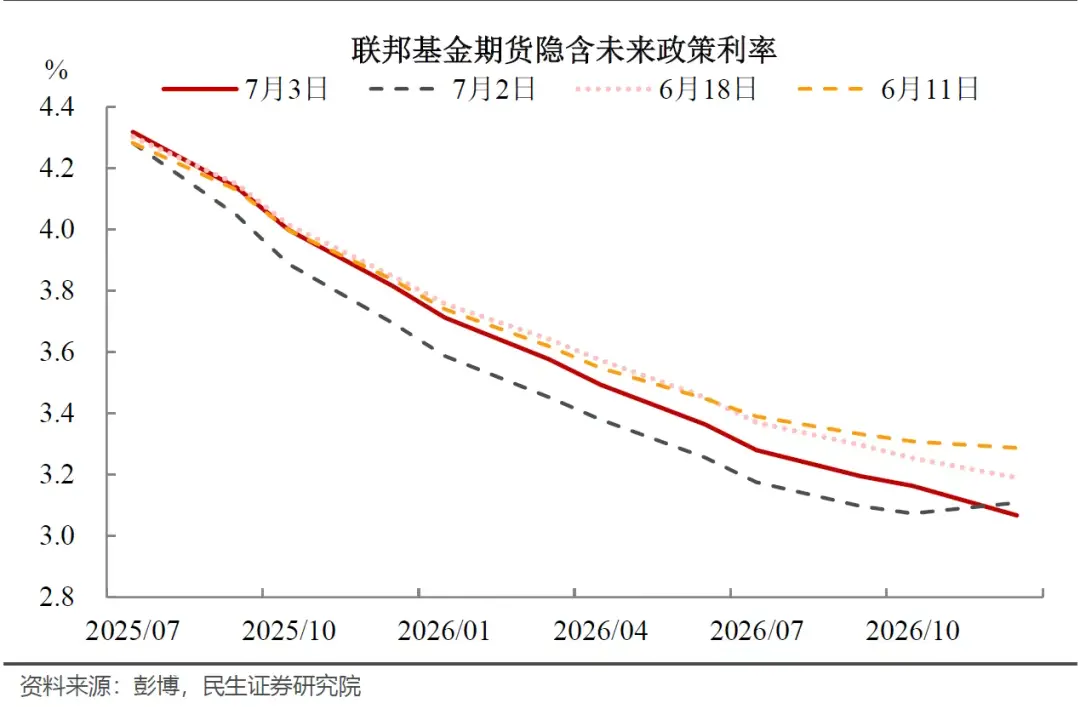Written by: Musol, Foresight News
In July, the U.S. Department of Labor released the non-farm employment data for June, which disappointed global market expectations—an increase of 147,000 jobs, far exceeding the expected 110,000, and the unemployment rate dropped to 4.1%. This data directly doused the market's expectations for a rate cut by the Federal Reserve in July. However, perplexingly, Bitcoin experienced a significant surge both before and after the data was released. What kind of market logic is hidden behind this unusual phenomenon? Whether in traditional markets or the crypto market, why does the non-farm data play the role of striking the first chord in the market's symphony?
What is Non-Farm Data?

"Non-farm" refers to employment data that excludes the agricultural sector, self-employed individuals, and employees of non-profit organizations, essentially reflecting the actual employment and economic situation in the U.S. It is published by the U.S. Bureau of Labor Statistics—released on the first Friday of each month, with U.S. release times at 8:30 AM Eastern Time (Daylight Saving Time) and 9:30 AM (Standard Time), corresponding to 8:30 PM and 9:30 PM Beijing Time.
In short, non-farm data is the monthly change in the U.S. non-agricultural employment population, including employment numbers, unemployment rates, etc.
It is like a "weather forecast" in the financial world, allowing us to sense the "sunshine and rain" of the economy in advance.
Why say this? Employment can be understood as the "barometer" of the economy. When employment is good, everyone has jobs, money in their pockets, and consumption increases, leading to economic prosperity; conversely, when employment is poor, everyone has to tighten their belts, and the economy resembles a "cold".
In the stock market, when non-farm data is strong, corporate profit expectations increase, and stock prices often rise, making investors feel like "generals who have won a battle"; in the bond market, strong non-farm data may lead to falling bond prices as the market expects interest rates to rise. This is akin to a "grand performance" in the financial market, with non-farm data being the key "Director", controlling the direction of the plot.

PS:
What is small non-farm data—small non-farm data is published by Automatic Data Processing (ADP) and refers to non-farm data from the private sector. The employment numbers they publish are considered authoritative. The ADP National Employment Report is sponsored by ADP and maintained by Macroeconomic Advisers. Small non-farm data is released once a month, typically on the first Wednesday of each month. This data is published at 9:15 PM (Standard Time: November - March) and 8:15 PM (Daylight Saving Time: April - October). Generally, small non-farm data has a certain predictive effect on non-farm data.
Differences between large non-farm and small non-farm—First, small non-farm primarily refers to non-farm data from the private sector, while large non-farm encompasses statistics from all industries across the U.S. Second, small non-farm data is released two days before the non-farm data, providing a predictive effect; typically, the data from small non-farm and large non-farm does not differ significantly. Everyone uses small non-farm data to predict large non-farm data.
Why Does Non-Farm Data Serve as a Prelude?

Non-Farm Employment Data is a Key Indicator for Judging Economic Cycles
Recession is defined as a sustained slowdown in economic activities such as industrial output, employment, and real wages over several months, indicating that the economy is between peaks and troughs.
From this, it can be seen that the key to determining whether the economy is expanding or contracting lies in observing monthly economic data. Since industrial output data is usually released quarterly and has weaker timeliness, the monthly data that can measure overall employment—non-farm employment data—becomes the most important indicator for judging economic cycles.
For example, if the economy has been in recession for six months, but non-farm data shows that employment has recovered and exceeded previous lows, then from the perspective of economic cycles, the economy has reversed, with the previous low being the trough, and future economic performance is likely to improve, greatly boosting market confidence.
Non-Farm Employment Data is Highly Correlated with Economic Performance
From the simplest economic knowledge, positive non-farm data indicates a positive economy.
Non-farm industry output accounts for 80% of the total output in the U.S.; an increase in non-agricultural employment indicates that businesses are expanding production and willing to hire more workers. These new employees will have more funds for spending and consumption. U.S. economic growth mainly relies on domestic demand, with consumption accounting for as much as 70% of U.S. GDP, so an increase in consumer spending directly reflects an overall improvement in the U.S. economy.
Thus, non-farm data is a key indicator for predicting economic growth and CPI levels.
Market Participants Use Non-Farm Data as a Basis for Economic Forecasts
Non-farm data is the most important parameter in the economic modeling process.
The Federal Reserve references non-farm data to determine future interest rate policies, institutional investors adjust their positions and scales based on it, and economists and analysts use this data to predict future economic trends. As a key economic indicator, non-farm data is a core input variable in decision-making for all parties, serving as a market barometer. Whenever actual non-farm data is released, it strikes the prelude, stirring market nerves, and the difference between expected and actual values creates a market amplification effect—the greater the difference, the stronger the amplification effect, which can even trigger significant fluctuations in the capital market.
What is the Impact of Non-Farm Data?

For U.S. Dollar Exchange Rate—When non-farm employment numbers increase, indicating a strong U.S. economy, it usually leads to a rise in the dollar; conversely, a decrease in employment numbers may trigger a depreciation of the dollar.
For Federal Reserve Monetary Policy—Good non-farm data may lead the Federal Reserve to consider raising interest rates to curb inflation; conversely, if the data is poor, the Federal Reserve may maintain low rates to stimulate the economy.
For Global Stock Markets—Good non-farm data typically boosts investor confidence, driving global stock markets up; while poor data may lead to stock market declines.
For the Bond Market—When non-farm data performs well, optimistic market expectations for the economy may lead to rising bond yields and falling bond prices; poor non-farm data may lead to falling bond yields and rising bond prices.
For the Foreign Exchange Market—The foreign exchange market is very sensitive to non-farm data. The dollar usually strengthens when non-farm data is strong and weakens when the data is poor.
For the Commodity Futures Market—Fluctuations in non-farm data can affect the prices of dollar-denominated commodity futures, such as gold and crude oil. A stronger dollar typically depresses gold prices, as gold is priced in dollars, making it more expensive for investors holding other currencies.
For Market Sentiment—After data is released, market sentiment may fluctuate significantly, and investors' expectations regarding future economic trends and monetary policy directions may diverge.
For Capital Flows—Changes in non-farm data may trigger adjustments in global capital flows, impacting the A-share market. Strong non-farm data may enhance global investors' confidence in dollar assets, leading some funds to flow back from emerging markets to the U.S. market.
In July, Why is There a Paradox in the Crypto Market Under Non-Farm Data?
Generally speaking, strong non-farm data would reinforce expectations for a rate hike by the Federal Reserve (at least not a rate cut), putting pressure on risk assets.
However, Bitcoin's performance that night resembled a discordant note among the harmonious chords: it rose by 1.1% in the 24 hours before the data release, and after the rate cut expectations were dashed, Bitcoin not only did not correct but continued to climb, breaking through the $110,000 mark.
This seemingly contradictory trend actually reveals the cognitive differences between the crypto market and traditional financial markets.
Some professional institutions have analyzed that Bitcoin's rise before the data release partly stemmed from market bets on weak data. Due to the erratic trade policies, many industry employers have recently adopted a wait-and-see attitude, hesitant to increase hiring. Therefore, many traders expected non-farm data to perform poorly and positioned themselves in safe-haven assets in advance.
However, this explanation fails to answer a key question—why did Bitcoin play its own symphony after the data far exceeded expectations?
A deeper analysis reveals that Bitcoin's counter-trend rise has a certain market logic:
First, even though non-farm data is strong, the breakdown shows that growth is concentrated in specialized services and finance, while sectors of the real economy such as healthcare and trade continue to shrink, creating structural contradictions that make the market doubt the authenticity of the economy. Especially in recent years, various data have been significantly revised multiple times, and the release of data seems to be a cover for other political purposes. The credibility of the data is gradually being eroded.
Second, the Federal Reserve's statement last week that "if the labor market weakens significantly, it may cut rates earlier than expected" has been interpreted by the market as a long-term accommodative tone that has not changed; a single month's data is unlikely to reverse this expectation. After all, the tens of trillions of U.S. national debt, with interest for a year nearly matching U.S. military spending, makes it difficult to change the trend of rate cuts.
The most decisive factor is that many institutional investors are viewing Bitcoin as "digital gold" to hedge against dollar credit risk. From a shift from risk assets to digital gold, Bitcoin has gradually become a "safe-haven asset" favored by mainstream economies. Recent asset performance seems to suggest that whether it is "good news" or "bad news," there is always a reason for Bitcoin to surge again. With small price fluctuations, quick recovery from negative news, and consistently good liquidity, a consensus has gradually formed in the Bitcoin market.
Data shows that within one hour after the non-farm data was released, net inflows into Bitcoin spot ETFs reached $230 million, proving that traditional capital is reconstructing asset allocation logic. When the market neither believes that the Federal Reserve will maintain the current high interest rates nor worries about structural economic issues, Bitcoin becomes the best safe haven for liquidity.
In a market with significant discrepancies in news, putting money into Bitcoin may have become a good choice.
Seeking BTC in Non-Farm Data? "Carving a Boat to Seek a Sword" May No Longer Apply

Looking back at the market reaction when the non-farm data was released in December 2024, a similar phenomenon occurred—an increase of 256,000 jobs far exceeded expectations, yet Bitcoin rose 12% in the following week. This "good news is bad news, bad news is good news" paradoxical correlation reflects that the crypto market has formed an independent pricing logic.
The transmission mechanism of the Federal Reserve's monetary policy is undergoing subtle changes. Comparing the expectations from July of this year (as shown in the chart), the strong non-farm data from December last year led to an increase in expectations for "maintaining interest rates unchanged for the year," precisely because the market discerned the structural contradiction between job growth and productivity improvement.

Despite feeling that the current situation is quite dire, the data shows an unusually strong performance, which raises doubts about the credibility of the data.
The current strength of Bitcoin is essentially a vote of confidence in the credibility of the Federal Reserve's policies—when the market believes the central bank is caught in a dilemma between inflation and growth, decentralized assets naturally gain a premium.
Ultimately, people have lost trust in traditional financial institutions like the Federal Reserve. After all, human actions can be manipulated.
As the yield on the ten-year U.S. Treasury bonds approaches 5% yet still fails to stop capital outflows, the market is reconstructing a pricing system that transcends sovereign currencies with real money.
Against the backdrop of diminishing marginal credit in the dollar system, cryptocurrencies have indeed transitioned from risk assets to alternative reserve assets.
Is it a flower, or is it not a flower? It comes at midnight and leaves at dawn. Does it come like a spring dream that lasts but a moment? Does it go like morning clouds that leave no trace?
Recommended reading:
OpenAI "fact-checks" Robinhood: Unveiling the four major controversies behind stock tokenization
免责声明:本文章仅代表作者个人观点,不代表本平台的立场和观点。本文章仅供信息分享,不构成对任何人的任何投资建议。用户与作者之间的任何争议,与本平台无关。如网页中刊载的文章或图片涉及侵权,请提供相关的权利证明和身份证明发送邮件到support@aicoin.com,本平台相关工作人员将会进行核查。




